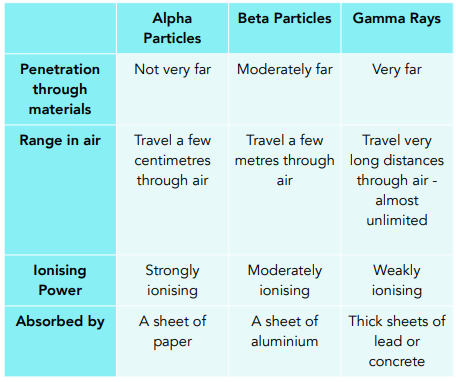Types of Nuclear Radiation (GCSE Physics)
Types of Nuclear Radiation
Types of Nuclear Radiation
We have previously mentioned that when a nucleus decays, it emits radiation. This radiation can take on several forms.
- Alpha particle. An alpha particle is like the nucleus of a helium atom. It is made up of 2 neutrons and 2 protons. This is emitted as an alpha particle, represented by this symbol: α.
- Beta particle. A beta particle is essentially an electron. When the nuclei is decaying, one of the neutrons in the nucleus will change into a proton and an electron. It is this electron that gets emitted as a beta particle, represented by this symbol: β.
- Gamma ray. A gamma ray is not a particle. It is actually a form of electromagnetic wave. It is this EM wave that gets emitted from the nucleus as a gamma ray, represented by this symbol: γ.
- Neutron. A neutron is a particle found in the nucleus. It can be emitted from the nucleus during radioactive decay, represented by this symbol: n.
Properties of radiation
For exams, you need to be able to remember the information from the following table:


Representing Radioactive Decay
We are able to represent radioactive decay through the use of nuclear equations. First, we need to know how to represent alpha and beta radioactive emissions:
An alpha particle is represented by:

A beta particle is represented by:






Still got a question? Leave a comment
Leave a comment